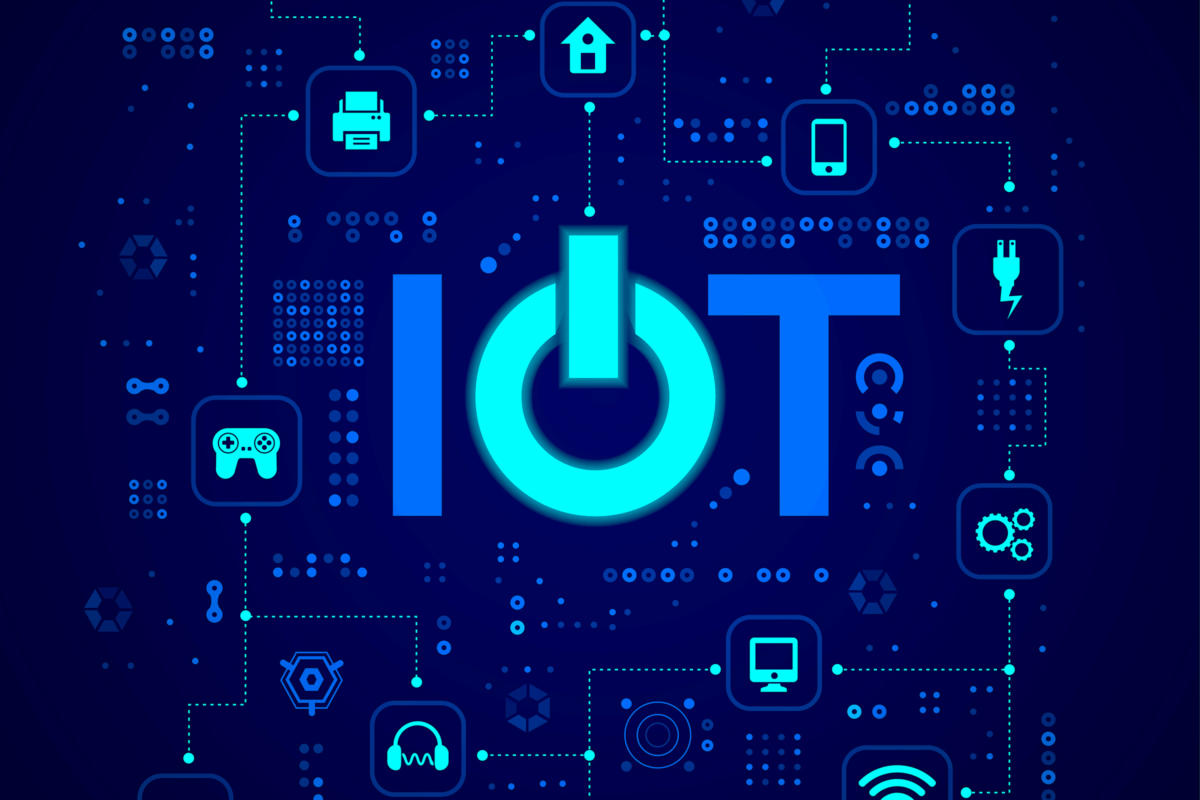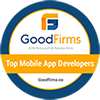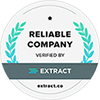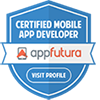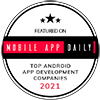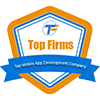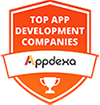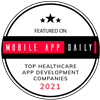Let’s start from the basics: what is Internet of Things and what are “things”?
A “thing” in the so-called “Internet of Things” can have different meanings and concretizations: a person with a cardiac monitoring system, an animal with a biochip, a car with integrated sensors to warn the driver when the tire pressure is low.
In short, any other natural or artificial object to which it is possible to assign an IP address and is able to transfer data over a network.
IoT has evolved from the convergence of wireless technologies, microelectromechanical systems (MEMS), micro-services and the Internet.
What is the Internet of Things?
More properly, the Internet of Things (IoT) is the network of physical devices, vehicles, appliances and other elements incorporated with electronics, software, sensors, actuators and connectivity that allows these things to connect and exchange data, creating opportunities for a the most direct integration of the physical world into computer systems, improving efficiency, economic benefits and reducing human efforts.
How IoT works?
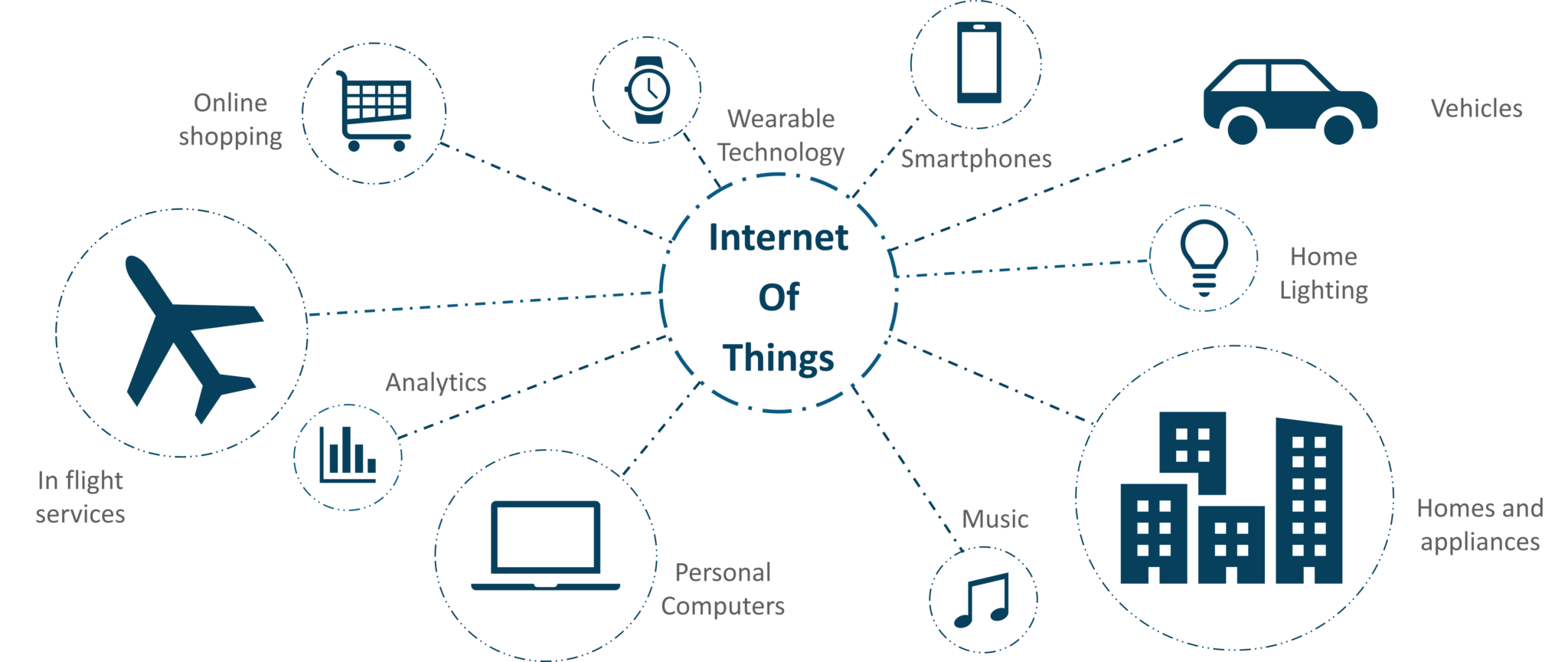
Many of us have dreamed of “smart” houses in which our appliances automatically carry out our orders: all this is possible today, and thanks to the Internet of things.
Just as the Internet has changed the way we work and communicate through the World Wide Web, the IoT today aims to take this connectivity to a further level by connecting multiple devices at a time to the Internet and facilitating interactions between people and machines.
An IoT ecosystem consists of Web-enabled smart devices that use integrated processors, sensors and communication hardware to collect, send and act on the data acquired from their environments.
The IoT ecosystem is not limited to a particular field, but has practically infinite business applications: from home automation to vehicle automation, from automation of a factory line to healthcare, retail and much more.
IoT components
Devices with different physical properties can be connected to the Internet, even while using the existing hardware system: whether it’s controlling the temperature or managing the lighting system of your home, automating the machines in your factory or monitoring the state of various parts of your car, without the sensors and the gateway nothing is possible.
IoT sensors / devices
IoT devices include transducers such as sensors and actuators, as well as a myriad of objects that are often referred to as “smart”, or simply “connected”: smart bulbs, connected valves and pumps, smart meters, connected cars, smart components building, smart home devices etc.
Sensors and devices of this type help to collect information from the surrounding environment: once collected, the data can have various degrees of complexity ranging from a simple temperature monitoring sensor to a complex video feed. A device can also have multiple sensors that can be joined together.
In both cases the sensors are part of the backbone of digital information and the “smart” solutions connected to them.
Everything that is “smart” and linked to the IoT is in fact based on sensors and other types of transducers: typically, a transducer converts a signal of one form of energy into a signal of another form.
Sensor classification
Passive or active: passive sensors do not require an external power source to monitor an environment, while active sensors need this source to function.
Another classification is based on the method used to detect and measure the property of a given element, be it mechanical, chemical or otherwise.
Analog and digital: analog sensors produce an analog or continuous signal while digital sensors produce a so-called “discrete” signal.
Examples of sensors
Temperature sensors: a device that allows to detect a change in the temperature level emitted by a particular source and capable of converting data for a device and for the end user.
Proximity sensors: a device that detects the presence or absence of a nearby object or the properties of that object and converts it into a signal that can be easily read by the user or by a simple electronic instrument without the need to come into direct contact.
Pressure sensors: a pressure sensor is a device that detects pressure and converts it into an electrical signal.
Chemical sensors: chemical sensors are applied in different industrial sectors with the aim of indicating chemical changes and their levels in the air.
Gas sensor: gas sensors are similar to chemical sensors, but are specifically used to monitor changes in air quality and detect the presence of various gases.
Smoke sensors: a smoke sensor is a device that detects smoke (airborne particles and gases) and its level. They have been in use for a long period of time.
IR sensors: an infrared sensor is a sensor that is used to detect certain characteristics of the surrounding environment by emitting or detecting infrared radiation.
Motion detection sensors: a motion detector is an electronic device that is used to detect the physical movement of animated and non-animated objects in a certain area and which is capable of transforming this movement into an electrical signal.
Connectivity
Connectivity is one of the main aspects to consider when IoT Development Company developing any Internet of Things (IoT) project: communication is in fact the center for the Internet of things.
There is currently an almost disconcerting choice of connectivity options available to those who design and develop solutions, systems and products for the Internet of Things (IoT) and only the experience of electronic and software engineers can guarantee the best selection based on the product that it is developing.
Sensors can be connected to the cloud through various means of communication and transport such as cellular networks, satellite networks, Wi-Fi, Bluetooth, geographic networks (WAN), low-power networks and much more.
Data processing
Once collected, the data arrives to the cloud and the software processes it: what does this data processing consist of?
It can vary from something fairly simple, such as checking that the temperature reading on devices such as AC or heater is within an acceptable range.
Or it can involve a very complex process, such as identifying objects (e.g. intruders in the home) using artificial vision of the video.
The essential concept is: The data must be analyzed and well exposed in order to be really useful and “readable”: it goes without saying that manual processing with a consistent flow of information typically produced by IoT devices is not practicable.
Most IoT solutions are based on automated analysis: analysis tools are applied to IoT data to generate descriptive reports, to present data via dashboards or to activate SMS or e-mail alerts, push notifications and related actions (e.g. automatic emergency calls).
User interface
How do you make this data readable in practice? How do you make the information available, clear and useful to the end user for his purposes?
Because the user can easily interact with the data and activate any actions that must be available and it is a good interface through which to actively control your IOT system, read the data, interact with them by generating reports and activating actions (e.g. increase or remotely decrease the level of a chronothermostat to find the fresh / heated home when you return, activate automatic message storage etc).
Examples of the Internet of Things
The effect that technology has on our lives is increasingly profound today and strongly involves every aspect of our professional, private and social life: at school we learn in a more innovative way, our homes and our vehicles can “communicate” to us their performance, in our companies machinery and company software are interconnected.
As IoT app developers we try to stay up to date on all applications dedicated to the world of the Internet of Things, because we believe that its IoT development will continue to play a decisive role in the process of digitizing the private but also corporate world.
Smart Home
“Smart Home” is the most sought after IoT application on Google: obviously we are all looking for, we want “smart” houses.
The “smart home” connotation has now become a yardstick of quality in the most avant-garde architectural and residential spaces but smart houses are expected to become as common as smartphones and within the reach of even the smallest pockets within a few years.
“Smart Home” products promise to save time, energy and money.
“Smart Home” is the term commonly used to define a house that has appliances, lighting, heating, air conditioning, TV, computers, audio and video entertainment systems, security and camera systems that can communicate with each other and be being remotely controlled and managed: any room in the house as well as remotely from anywhere in the world via smartphone or internet.
Driverless car
Another of the most futuristic applications of the IoT is the so-called “driverless car”: without drivers but however able to take you to your destination alone!
Equipped with tons of devices such as sensors, gyroscopes, cloud architecture, internet and more, these machines perceive huge amounts of data on traffic, pedestrians, road conditions, and process them in real-time. To transmit them to the “controller” who makes the relevant driving decisions.
Wearables
It is very likely that you already have wearable devices, among the first of the IoT ecosystem that have become part of our daily life: from FitBit to smartwatches, everything you wear that is connected to the Internet is part of the IoT.
Through sensors, these devices communicate data to give you the most precise information about your needs: detect heart rate, “count” the steps and the relative “energy” used, connect to the telephone function to activate an emergency call are all possible actions thanks to IoT technology.
Applications of IoT in various industries
IoT for Consumers – “smart” purchases and trends.
The latter is an important fact if we consider that even today, despite being present in almost half of homes (41%) at least one “smart” object connected to the network, this is often not used to its full functionality.
The fact that they are present does not imply that they are fully exploited: too often IoT functions are still perceived as excessively complex, “futuristic” or not indispensable.
The spread of smart objects that are perceived as “user friendly” such as devices for voice commands then becomes in this crucial context: it could in fact act as a flywheel on the entire market, dragging behind equally fascinating solutions, especially if connected to the home automation management of additional smart systems such as heating or alarm systems, both domestic and industrial.
Smart lighting: the first choice of users
It is no coincidence that the other major “product-tow” in the sector is that of smart lighting: 20% of user expenditure in the IoT sector was directed towards the purchase of lighting systems connected to the network and managed remotely.
Voice assistants and first IoT installations for home automation therefore open the way to the new desires of consumers who seem less and less oriented towards obtaining simple information (“passive” use) to begin to actively and autonomously manage objects and systems (“active” use): household appliances (23%), boilers and thermostats (23%) for the heating and refrigeration system, alarms and anti-theft systems (16%).
The convergence of technologies: the other essential step
The IoT has just turned 20: 20 years in which the development technologies have multiplied and evolved in the various application areas, from the automotive that today produces vehicles with on-the-go connectivity to domodics, now increasingly seen in wireless solutions within reach of the non-technical consumer.
As the observatory underlines in a recent survey, world is now in the full development phase of IoT technology and solutions. The growth of the market continues at a rapid pace, in terms of value and maturity of the offer; the LPWA (Low Power Wide Area) communication networks are expanding, alongside the 5G experiments; sensors evolve; startups proliferate and new market opportunities arise, for example with In-Thing purchase and design-driven approaches.
It is therefore in this context of full bloom that the challenges and critical issues connected to the aspects of Artificial Intelligence and personal (and corporate!) Privacy of data come together.
A challenge that companies must be ready to take in order to participate in the technological and business advantages connected to the IoT “world”.
IoT and logistics: applications and advantages
The Internet of Things (IoT) has several applications in logistics services that offer solutions capable of improving the productivity of the supply chain and therefore of the company’s competitiveness. The introduction of IoT technology in logistics activities and processes has brought great value to the supply chain: solutions to the transport, storage and distribution processes can be found thanks to the constant collection of information offered by the IoT: Trends are expected, they build patterns or design inconsistencies are resolved.
The impacts on logistics processes
The digitalization of the logistics services sector has been accelerated by the advent of IoT technology that allows you to organize, automate and control processes remotely and from any device connected to the Internet. By definition, an efficient supply chain is responsible for delivering the goods, from the manufacturer to the end customer, at the agreed time and under the specified conditions. Through the use of IoT technology it is possible to track the entire process in real time, promoting speed and efficiency in automated processes, reducing time and costs for the personnel involved.
Examples of the use of IoT technology in logistics
Warehouse
IoT technology introduces sensor devices in the warehouses capable of monitoring the precise entry and exit of the goods, the volume and weight on the shelves to identify if the goods that are positioned are the correct ones, climatic sensors to ensure that optimal conditions are maintained for storage, sensors to detect the availability of space, glasses or “smart” labels that allow you to identify the goods and their exact position within the installation.
Load
Sensors for remote monitoring allow to detect data on temperature and humidity, ensuring that the movement of goods is carried out according to the care required. Sensors to prevent damage and theft detection enhance the security of warehouses and vehicles, also monitoring their position during the transfer in real time.
Fleet
IoT applications dedicated to company fleets for distribution allow you to take advantage of software capable of designing the optimal distribution of the load in the units, to identify their exact position, to collect historical data on the travels, the driving styles of the operators, the fuel consumption and detection of fluid levels and polluting emissions.
Route Optimization
It is now possible to plan and monitor the best routes, detecting traffic conditions in real time through and organizing the order of deliveries based on reception areas and schedules.
Related Blog: Top 5 Industries That Are Winning with IoT
Customer care
Guarantee of punctuality and receipt of both inputs for companies and finished products to the end customer through remote devices for receiving delivery, traceability of the goods and real-time updating of delivery information put us in direct and immediate contact with the point of customer’s view, allowing us to promptly manage all aspects of the so-called “customer care”.
Benefits for the industry
The advantages of IoT in logistics are reflected in the saving of time and costs, in the elimination of errors and in customer satisfaction. IoT generates infinite possibilities: real-time location systems (RTLS) coupled with wireless mobile devices allow full visibility of goods along the entire supply chain, from the exit of the supplier to delivery to the customer, thus increasing the value of your offer.
The efficiency achieved by the integration of GPS, intelligent sensors, mobile applications and wearable devices optimizes the use of resources, automates processes, guarantees immediate inventory control, reduces losses due to damage to goods and improves lead times, delivery to offer greater productivity and, therefore, profitability to companies.
It follows that, when the Internet of Things is integrated into the logistics processes, the design of the distribution networks is evidently more complex, but the competitiveness of the production companies and the logistics service providers depends to a large extent on the ability to welcome and implementation of this technology.
IoT in agriculture: the connected farm
The smart and tech farm
A first interesting distinction to better clarify the concepts related to smart agriculture consists in considering separately the concepts of AgriTech and smart agriculture.
The first case includes software and applications dedicated to the optimization of particular agricultural processes: these can be created independently of any type of IoT device and represent a trend that was certainly born well before the technology linked to the internet some things.
Smart agriculture, on the other hand, refers to specific applications focused on the Internet of Things and therefore on the use of interconnected devices.
Specific application examples of IoT technology in the agricultural sector? Let’s think for example of a series of sensors installed at a certain distance from each other to monitor anything: from the cultivation of wheat to the breeding of cattle. The aim is always the same: to help farmers to optimize agricultural processes and to organize their business more efficiently.
The advantages of IoT technology applied to agriculture

Data collection
Practically any data can be collected thanks to the support of the sensors installed: from the weather conditions to the state of health of the livestock to the development of the crops.
This data can be stored on a server and made accessible to agricultural entrepreneurs in a simple way, through usable interfaces that allow a simple monitoring of the collected data and an analysis that allows you to take the right directions.
Risk reduction
Thanks to the data collected, it is easier for agricultural companies to make forecasts, change their business processes or interpret what the future could hold for us by acting in time.
Real-time monitoring
Sensors and wearable devices make data and information related to real-time control accessible to farmers: the position of flocks and livestock up to the individual animal, their health conditions and vital data.
Control over weather data and monitoring of crops
The weather stations equipped with sensors are able to collect specific data: beyond the pure collection of weather data, the real added value is in the possibility of having a multiplicity of aggregated data (humidity, rainfall, temperatures, etc.) resulting from analyzes that allow the farmer to have detailed and specific forecasts on his own areas, being able to act in time to prevent damage to crops.
Greenhouse automation
Installing a system inside a greenhouse consisting of a series of sensors allows you to monitor the basic parameters of temperature and humidity by adjusting the conditions of the greenhouse in an optimized manner.
Why and how to make your farm “smart”
If you are thinking of making your farm smart, as well as for any other technological investment, the first assessment to be made must be relative to the purpose you want to achieve.
In particular:
What parameters do you most need to monitor? Monitoring cattle is very different than monitoring a field.
What are the specific conditions and layout of your land? Plain, hills, altitudes and gradients.
All information necessary to start organizing the hardware equipment and the logistics of its positioning, the calculation of the distances and the best technological solution to serve them, the power supply system of the sensors etc.
Finally, the development of the software and application that will enable staff to access, monitor and manage data.


